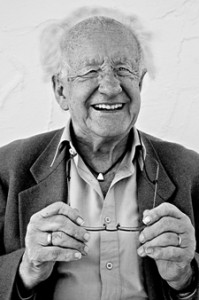Structural violence re-explored
By Johan Galtung
The essay “Galtung’s Structural Violence and the Sierra Leone Civil War c. 1985-1992” by Philip Leech [TMS-Analysis 14 Jul 2014],–of all the commentators the deepest–is a very welcome opportunity to clarify and develop further some of the underlying thinking. By and large his comments, based on Peace by Peaceful Means (PBPM, SAGE, 1996); the concepts have been developed further in A Theory of Peace) are very positive. I focus on the questioning and critical, and not on Sierra Leone, having no direct mediation experience. Leech is familiar with the conflict.
Leech says repeatedly something that meets with my full agreement: “No theoretical concept can tell the whole story”. Indeed, how could a string of words match the ever evolving complexity of reality? A sharp edge–by a Marx (means vs modes) or a Toynbee (challenge vs response)–may reveal some deep aspects but never “the whole story” which, in addition, is revised all the time–with new sharp edges.
In my efforts toward nothing less than a new culture to come to grips–diagnosis, prognosis, therapy–with conflict, violence and peace, structural violence is only one component. Cultural violence–not as direct or structural violence between cultural groups but as culture used to justify, legitimize them–is another. Still others are deep culture, deep structure, deep nature (a forthcoming book), focused on cultures, structures and nature. We are not aware of them for lack of knowledge, because we take them for granted, or because we repress them, preferring to be unaware–like ageism, dualism, sex–for ages.
And then the 1958 distinction, negative vs positive peace. There will be more. However, certainly not singly, nor combined do they carry “the whole story”. But they may serve to focus our attention.
Structural violence is violence in itself–neither a sufficient nor a necessary cause of direct violence–not sustained by intended acts of commission, but by endless acts of omission. More insidious.
And it takes many forms, beyond vertical hierarchy. There is also anarchy with loneliness insulting the human need for togetherness through interaction. And there is polyarchy, too much interaction, both vertical and horizontal, insulting the need for some solitude. Even purely horizontal, equitable, interaction, dubbed “equiarchy”, may be violent by limiting interaction to small groups. Problems everywhere, conflicts within and without; no perfect solutions.
Leech says that “structural violence is an ostensive label that may be applied to a broad range of phenomena”–agree!–and right after “the nature of structural violence is somewhat vague in that it allows the quality and the quantitative nature of aggression and dominance to be variable”. Disagree. Structural violence, like colonialism, may automatically keep some people “in their place”. There are strong interests–structurally conditioned needs–behind efforts to change and to preserve the structure, revolution and counter-revolution. Of course the efforts are “variable”; depending on resources available.
I count 5 key resources–Leech mixes them a little–consciousness to overcome penetration and segmentation, organization to overcome fragmentation and marginalization; then confrontation, then struggle but by peaceful, nonviolent means, including delinking in vertical structural violence, and in the end (more) horizontal relinking. There is much generalization of Marx with Gandhi in this; I tried to launch concepts and ideas that could speed up nonviolent processes.
“The greatest criticism of Galtung’s work is that the theoretical approach that he outlines is too generalized”, says Leech, rightly. This is an intellectual framework for thought, a discourse for speech. To become policies for action concretization to specific conflicts is needed and the book 50 Years, 100 Peace & Conflict Perspectives (TRANSCEND University Press, 2008) is about that. After that, 100 more reasonably concrete visions have been published as TMS editorials–another forthcoming book.
Intellectuals are usually more interested in concepts than in policies; for politicians it is the other way round; in my experience. For negative peace the policy goal is relatively clear: the ends of direct violence (like in a cease-fire), the end of structural violence (like in mutual isolation) and the end of cultural violence (like by subscribing to human rights). But Leech rightly takes me to task for being vague on positive peace in PBPM. I was painfully aware, and the formula in A Theory of Peace is an effort; based structurally on cooperation for mutual and equal benefit, culturally on empathy across fault-lines for harmony, emotional resonance, and for contradictions on trauma conciliation and conflict solution. All four, no small task, but feasible; like parents and children becoming equals.
Disarmament? Leech asks, knowing my answer: with no deep conflicts, parties can co-exist peacefully with huge amounts of arms; remove the weaponry and they will have hidden-smuggled-produced–using cease-fires to do so–when the four factors are not taken seriously. But easy access to cheap arms may be a factor, if not a root cause, in its own right.
How about coercive state power? Leech asks; agreed but watch out. Mediators can find ways of solving conflicts over legitimate goals, but there are parties with illegitimate, violent goals. Pursuing them, obtaining them, when against the law, is criminal. For detection we have police, for adjudication lawyers and courts, for individual and general prevention punishment. We need that, but it can be improved. Thus, such goal-pursuits as massive speculation and aggressive war–insulting the basic needs of millions, even their lives–have still to be criminalized. The hypotheses of individual and general prevention may not be empirically tenable. More positive peace may work better. Punishment is direct violence–but, is the sum of two violences peace?
“Structural violence” focuses on deficits in structures, not in persons; law is person-oriented. We need both. Thanks, Phil Leech.
First posted on Transcend Media Service here.
